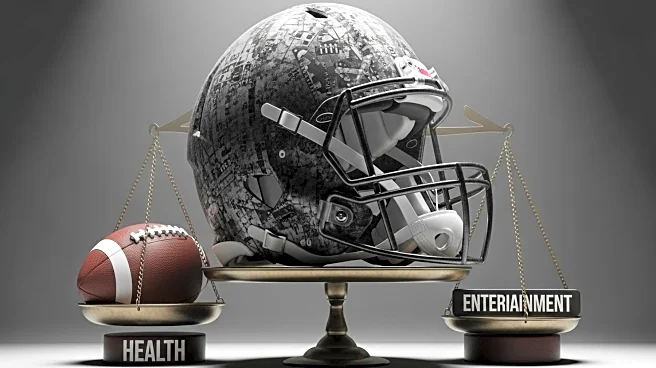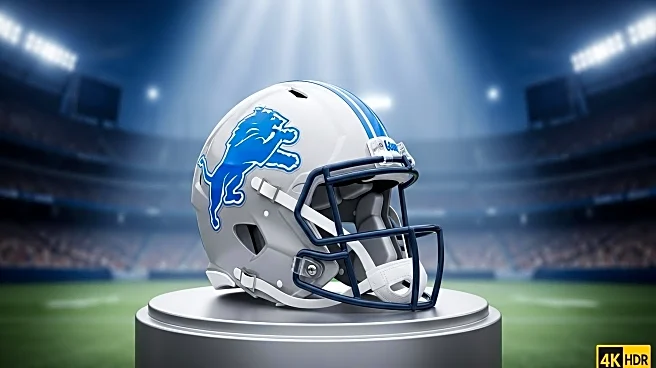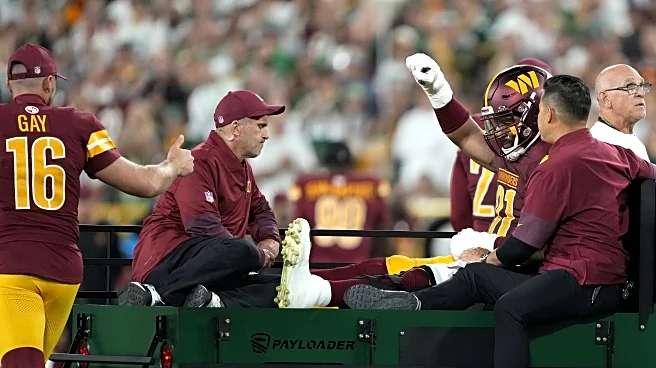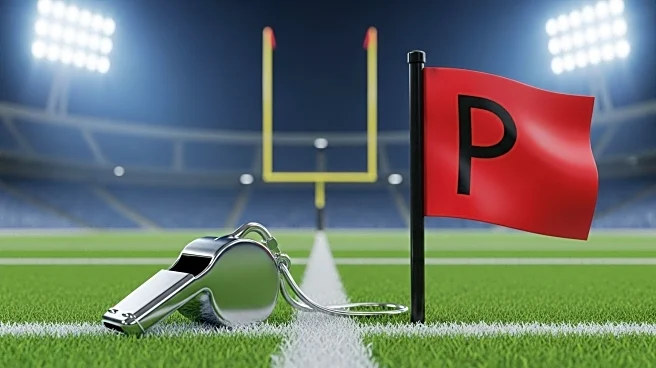What's Happening?
A recent opinion piece in The Washington Post discusses the ethical dilemmas faced by NFL fans in light of the health issues experienced by retired players, particularly chronic traumatic encephalopathy (CTE). The article highlights the conflicting emotions of fans who enjoy the sport but are aware of the physical and cognitive risks associated with football. Readers shared their personal experiences and views on the ethics of watching football, with some expressing guilt over supporting a sport that can lead to long-term harm for players.
Why It's Important?
The discussion around the ethics of watching football is significant as it reflects broader societal concerns about the impact of sports on athletes' health. The prevalence of CTE among retired NFL players has raised awareness about the dangers of contact sports and the need for improved safety measures. This conversation may influence public opinion and potentially lead to changes in how the sport is perceived and regulated. It also highlights the tension between entertainment and ethical considerations, prompting fans to reevaluate their support for the NFL.
What's Next?
The ongoing debate about the ethics of football may lead to increased advocacy for player safety and health research. Fans and stakeholders might push for more stringent regulations and protective measures to minimize the risks associated with the sport. The NFL could face pressure to address these concerns and implement changes that prioritize player welfare. Additionally, the conversation may influence future generations' interest in football, potentially shifting focus to less dangerous sports.
Beyond the Headlines
The ethical considerations surrounding football extend beyond player health, touching on issues of informed consent and the responsibilities of sports organizations. The debate raises questions about the balance between entertainment and the moral obligations of fans and leagues. It also highlights the cultural significance of football in American society and the potential for long-term shifts in how the sport is valued and consumed.












